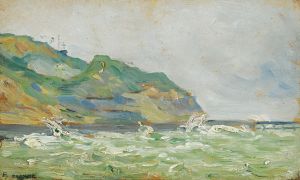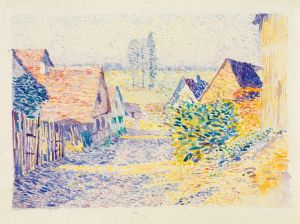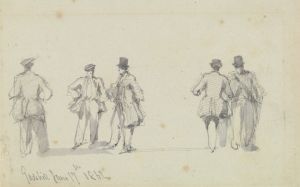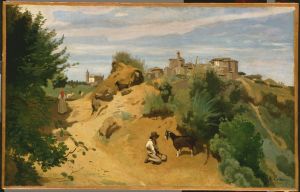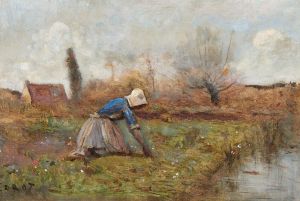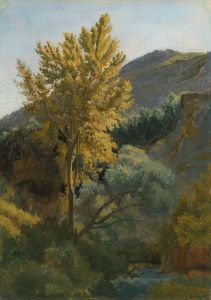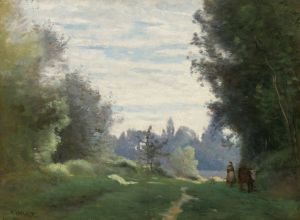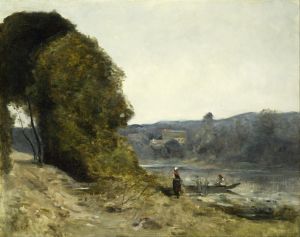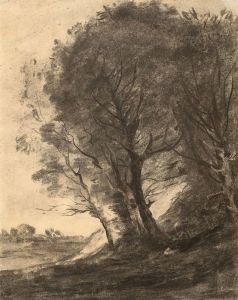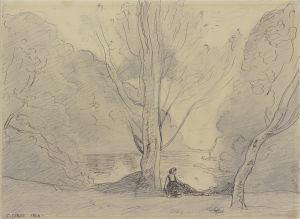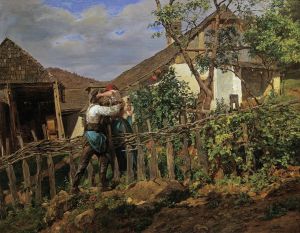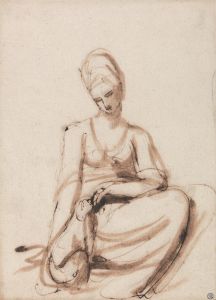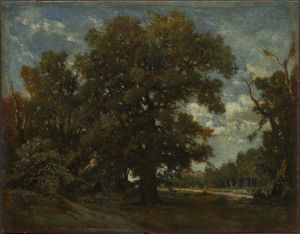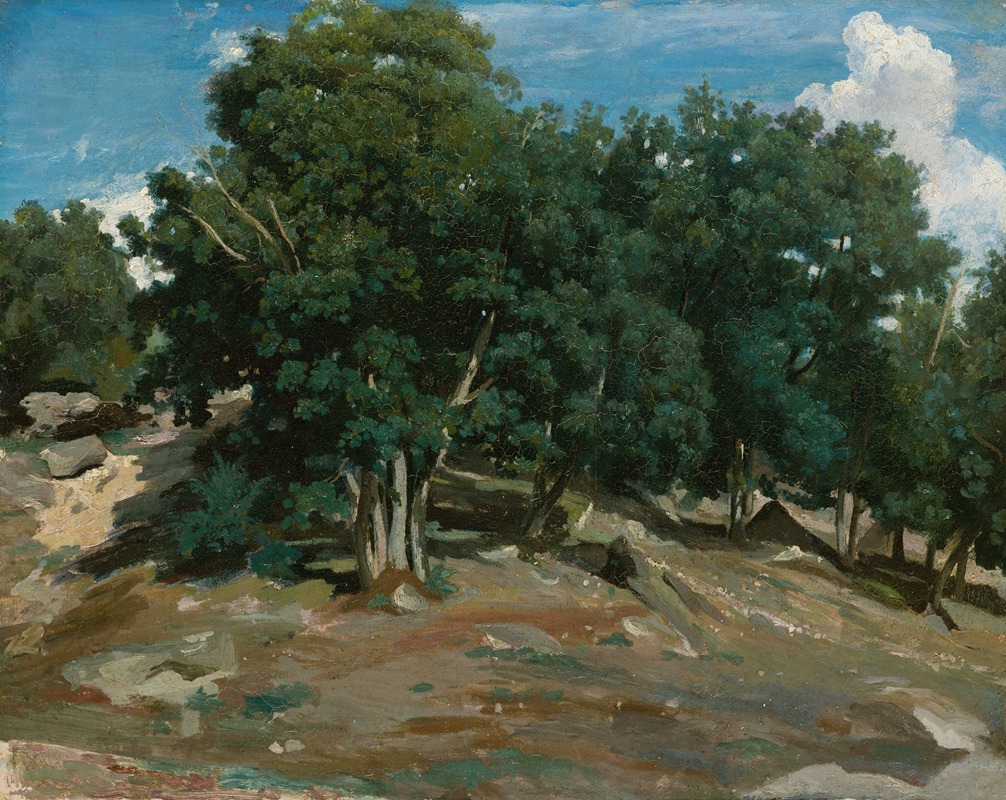
Fontainebleau; Oak Trees at Bas-Bréau
A hand-painted replica of Jean-Baptiste-Camille Corot’s masterpiece Fontainebleau; Oak Trees at Bas-Bréau, meticulously crafted by professional artists to capture the true essence of the original. Each piece is created with museum-quality canvas and rare mineral pigments, carefully painted by experienced artists with delicate brushstrokes and rich, layered colors to perfectly recreate the texture of the original artwork. Unlike machine-printed reproductions, this hand-painted version brings the painting to life, infused with the artist’s emotions and skill in every stroke. Whether for personal collection or home decoration, it instantly elevates the artistic atmosphere of any space.
"Fontainebleau; Oak Trees at Bas-Bréau" is a painting by the renowned French artist Jean-Baptiste-Camille Corot. Corot, born on July 16, 1796, and passing on February 22, 1875, was a pivotal figure in landscape painting and is often associated with the Barbizon School, a movement that emphasized naturalistic representation and was a precursor to Impressionism.
The painting depicts a serene forest scene in the Bas-Bréau area of the Forest of Fontainebleau, which is located southeast of Paris. This forest was a popular destination for many artists of the Barbizon School, who were drawn to its diverse and picturesque landscapes. The oak trees in the painting are rendered with Corot's characteristic attention to detail and his ability to capture the play of light and shadow.
Corot's work is known for its poetic and atmospheric qualities, and "Fontainebleau; Oak Trees at Bas-Bréau" is no exception. The painting showcases his skill in creating a sense of depth and tranquility, inviting viewers to immerse themselves in the natural beauty of the scene. The use of soft, muted colors and delicate brushwork are hallmarks of Corot's style, contributing to the overall sense of harmony and balance in the composition.
Jean-Baptiste-Camille Corot was a master of plein air painting, a technique where artists paint outdoors to directly capture the effects of light and atmosphere. This approach is evident in "Fontainebleau; Oak Trees at Bas-Bréau," where the natural light filters through the foliage, creating a dappled effect on the forest floor. Corot's ability to convey the subtleties of light and shadow was highly influential on later generations of artists, including the Impressionists.
Throughout his career, Corot maintained a balance between his studio work and his outdoor studies. His landscapes often reflect a deep sense of observation and a profound connection to nature. "Fontainebleau; Oak Trees at Bas-Bréau" exemplifies this connection, as it captures a specific moment in time with a sense of immediacy and intimacy.
Corot's influence extended beyond his own time, as his works were highly regarded by both his contemporaries and later artists. His ability to blend realism with a lyrical quality set him apart from many of his peers. "Fontainebleau; Oak Trees at Bas-Bréau" is a testament to his enduring legacy and his contribution to the development of landscape painting.
The painting is part of Corot's extensive body of work, which includes numerous landscapes, portraits, and figure studies. His dedication to capturing the essence of the natural world has earned him a lasting place in the history of art. Today, Corot's works can be found in major museums and collections around the world, where they continue to be admired for their beauty and technical mastery.
In summary, "Fontainebleau; Oak Trees at Bas-Bréau" by Jean-Baptiste-Camille Corot is a quintessential example of the artist's ability to depict the natural world with sensitivity and skill. The painting reflects Corot's deep appreciation for the landscape of the Forest of Fontainebleau and his mastery of light and atmosphere, making it a significant work in the canon of 19th-century French art.





